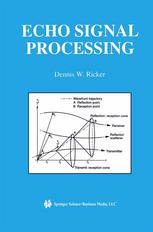

Most ebook files are in PDF format, so you can easily read them using various software such as Foxit Reader or directly on the Google Chrome browser.
Some ebook files are released by publishers in other formats such as .awz, .mobi, .epub, .fb2, etc. You may need to install specific software to read these formats on mobile/PC, such as Calibre.
Please read the tutorial at this link: https://ebookbell.com/faq
We offer FREE conversion to the popular formats you request; however, this may take some time. Therefore, right after payment, please email us, and we will try to provide the service as quickly as possible.
For some exceptional file formats or broken links (if any), please refrain from opening any disputes. Instead, email us first, and we will try to assist within a maximum of 6 hours.
EbookBell Team

4.4
102 reviewsThis book presents basic and advanced topics in the areas of sig nal theory and processing as applied to acoustic echo-location (sonar). It is written at the advanced undergraduate or graduate level, and as sumes that the reader is conversant with the concepts and mathematics associated with introductory graduate courses in signal processing such as linear and complex algebra, Fourier analysis, probability, advanced calculus, and linear system theory. The material is presented in a tuto rial fashion as a logical development starting with basic principles and leading to the development of topics in detection and estimation theory, waveform design, echo modeling, scattering theory, and spatial process ing. Examples are provided throughout the book to illustrate impor tant concepts and especially important relationships are boxed. The book addresses the practical aspects of receiver and waveform design, and therefore should be of interest to the practicing engineer as well as the student. Although much of the book is applicable to the general echo-location problem that includes radar, its emphasis is on acoustic echo location especially in regard to time mapping and the wideband or wavelet description of Doppler. Introductory signal theory material is included in the first chapter to provide a foundation for the material covered in the later chapters. A consistent notational convention is ob served throughout the book so that the various mathematical entities are readily identified. This is described in the glossary and symbol list.